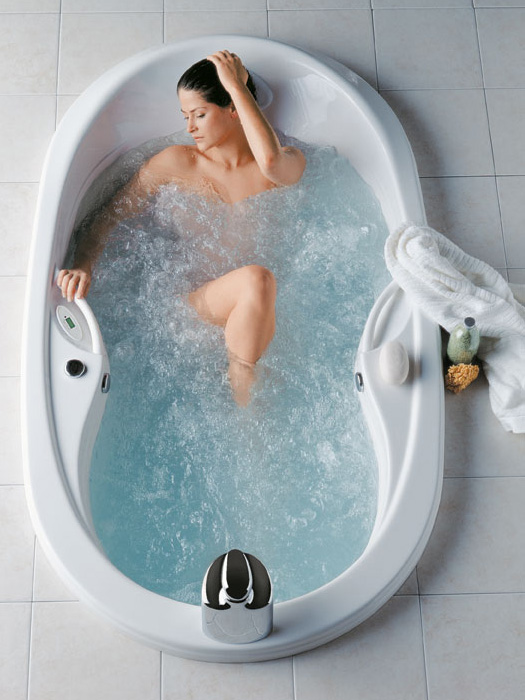 |
| Residential Water Use |
In the United States, approximately 408 billion gallons (1,544 billion liters) of water are used every day! While power production and irrigation (watering crops) consume the majority of water usage, public and self-supply water systems produce 47 billion gallons (178 billion liters) a day for residential users and businesses.
Residential water use includes both indoor and outdoor household water usage. Water is used indoors for showering, flushing toilets, washing clothes, washing dishes, drinking, and cooking. Outdoor water usage includes washing the car, and watering the lawn, pools, and plants.
Public and private water
Nearly 85% of residential water users in the United States receive their water from public supply water systems. A public supply water system is a government facility or private company that collects water from a natural source such as a lake, river, or the ground.
  |
Through a process called purification, pollutants, mud, and salt are removed from the water, and then the clean water is delivered to residents for a fee. Public water systems also remove wastewater, all water that goes down a drain, away from homes. Sewer systems carry wastewater to treatment plants where the water is cleaned and then released.
County and city water utilities are examples of public supply water systems. The remaining 15% of residential water users in the United States obtain water from a self-supplied water system. A self-supplied water system typically uses a well to obtain clean water from the ground and a septic system to purify wastewater.
Since the 1950s, the number of Americans on public supply systems has more than doubled, while the number on self supplied systems has decreased slightly. This pattern of water usage reflects the trend of Americans moving from rural areas, which often must rely on wells, to the cities.
Conserving water
In many parts of the United States, particularly in the West and Florida, the increased reliance on public water systems has put a strain on the water supply. This has led many local and state governments to ban or limit certain forms of residential water usage. State and local laws may restrict how often residents may water their lawns or wash their cars. Some cities encourage residents to use lawn and garden plants that require less water.
Water conservation is important because the average American uses 60 to 70 gallons (227 to 265 liters) of water per day. The high rate of residential water usage led Congress to promote the manufacture of low-flush toilets. The Energy Policy Act of 1992 stated that toilets must operate on 1.6 gallons (6 liters) or less per flush.
While this may appear to be an unusual law, older toilets, which used 3.5-5 gallons (13 to 19 liters) per flush, accounted for almost half of indoor residential water usage. Before the Energy Policy Act, toilets used 4.8 billion gallons (18 billion liters) of water per day or 9,000 gallons (34,069 liters) per person every year.
The introduction of other water saving devices may further lessen residential water usage while also saving money on water bills. Showers account for about 20% of indoor water use. A low-flow showerhead uses 2.5 gallons (9.5 liters) per minute instead of the standard 4.5 gallons (17 liters) per minute.
Studies have shown that a low-flow showerhead can save thousands of gallons (liters) of water per person every year. Even a simple and inexpensive water aerator, which mixes air with the water coming out of a kitchen or bathroom sink, can reduce faucet water usage by up to 60% a year.
